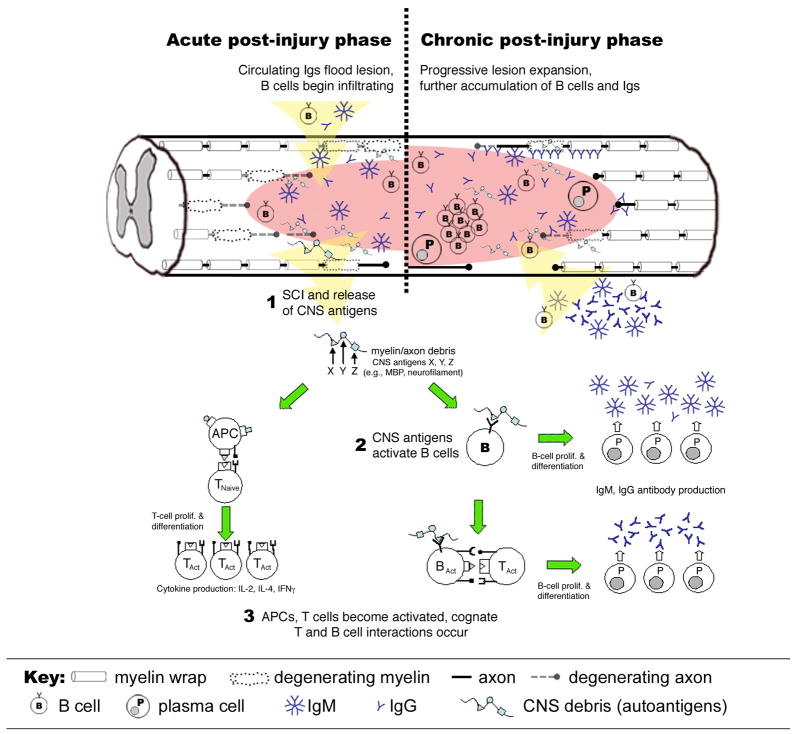Figure 1.
Putative mechanisms of B cell activation after traumatic SCI. SCI causes cell death and blood-spinal cord barrier (BSCB) damage (1). At this time, circulating B cells and (pre-formed) immunoglobulins (Igs) cross the BSCB and accumulate at the injury site. BSCB also facilitates drainage of CNS antigens to peripheral lymphoid organs with subsequent B cell recognition of CNS antigens causing B cell proliferation and antibody production (2). Concurrently, APCs present CNS antigens to T cells (3). Cognate interactions between T and B cells amplifies the autoimmune response to CNS antigens such that during the chronic post-injury phase (weeks to months post-SCI), B cells and antibodies continue to accumulate at the injury site forming ectopic follicle-like structures with Igs decorating cells and tissues in and nearby the site of injury.

